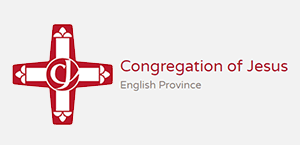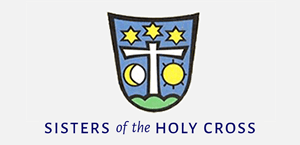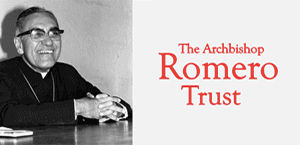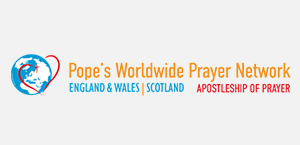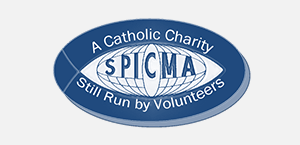Countdown to the Environment Encyclical: 8. Stability of Earth
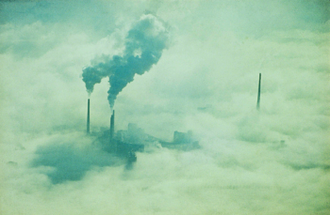
Whenever I used to hear St Patrick's Breastplate read or sung, that line about 'Stability of Earth' stood out for me. Why is it in there? Surely this is something we can take for granted, I thought.
But I've had a little niggle since childhood - it has to do with the last Ice Age. I was in a Geography lesson at my school in Hammersmith and our ever-creative Sacred Heart Sister and Geography teacher, Mother Patterson, handed out a map of Britain and told us to draw a line East to West north of London. We then had to colour everything north of that line blue. Apparently, an ice sheet between 20 feet and three miles thick stopped at this line during the last Ice Age of 11,500 years ago. Nobody could live north of it until the ice sheet melted. It's been at the back of my mind ever since that our environment is actually ever-changing, but if the change happens slowly we can adapt.
Yet, what happens if the change is sudden and dramatic? Is Stability of Earth an issue today?
In 2011 a scientific working group commissioned by the Vatican's Pontifical Academy of Sciences published a document 'Fate of Mountain Glaciers in the Anthropocene'. It documented the opposite problem to ice sheets covering 30% of the planet - it reported that in our world today glaciers are in rapid decline everywhere and that their loss will have profoundly negative impacts. The threat to the ways of life of people dependent upon glaciers and snow packs for water supplies, for example, compels immediate action to mitigate the effects of global warming. Speedy reduction in greenhouse gas emissions and protection of forests and other climate sinks were urged in the document. Consider the use of the word 'Anthropocene' in the title. The anthropocene is a new geological time period that marks the 'Age of Humanity', an age when the impacts of humankind on the planet have become a major factor in environmental and climate changes. Surely this document influenced Pope Francis.
The vast majority of the world's climate scientists predict increasingly severe weather linked to a warming planet. The strength of tropical storms such as Typhoon Haiyan which hit the Philippines in November 2013 is connected to sea temperatures, for as the oceans warm with climate change, there is extra energy in the system. Pacific ocean waters are warming faster than elsewhere, and there is a broad scientific consensus that typhoons are now increasing in strength. Typhoon Haiyan flattened vast areas, killed at least 10,000 people and left nine million people struggling to survive without food, shelter or clean drinking water.
According to Yeb Sano, a Philippine climate negotiator who initiated the 'Pray and Fast for the Climate' initiative, "we must stop calling events like these as natural disasters for it is not natural when science already tells us that global warming will induce more intense storms".
He feels that action must be urgent and drastic "to ensure that we prevent a future where super typhoons are a way of life" and he deplored "international climate stalemate".
Planet Earth's climate has been relatively stable for the last 10,000 years, but this is changing. 2012 was one of the world's hottest years on record, seeing increasing instances of wildfires in Australia and Russia, floods in Asia and hurricanes in the Americas. Since then, environmental degradation associated with climate change has caused food and water shortages, migration of peoples and economic losses. These in turn raise tensions in the regions where they occur. It is highly likely that that the struggle for resources and migration pressure will become more challenging as climate change takes effect. Conflict will be closely linked to climate change.
During the twenty-first century the average surface temperature over the globe is expected to rise faster than at any time over the last 10,000 years. The overwhelming evidence is that the global warming we're seeing now is mostly man-made. It's not a natural process, no matter how much climate change deniers may claim it is. That's why we must act now. The speedy changes don't give the world's species (including ourselves) much time to react or adapt. The gap between what the science tells us we need to do to keep climate change below 2°C, the internally agreed 'safe' level that we're aiming to keep global temperature rises below, and what we're currently doing, is huge. 2°C of warming might not sound like much, but note that the difference in global temperatures between today and the last Ice Age is only 5°C.
We have already raised the global average temperature by around 1°C.The good news is that if we accept humans are a major cause of climate change, we can choose to do something about it. But we have to do it soon.
The Chancellor of the Vatican's Pontifical Academy of Sciences, Bishop Marcelo Sánchez Sorondo, gave CAFOD's annual Pope Paul VI lecture in London last November. He spoke about the two biggest threats of our time being climate change and poverty. He pointed out that the challenge of climate change is not only economic, political or social, but is also an issue of morality and religion, justice and social inclusion. There is a moral obligation of solidarity with future generations and the obligation to care for the earth, namely creation, which is our habitat, he said. He referenced the extensive scientific evidence linking climate change to human activity while highlighting the fact that the poorest people, who use the least energy, are suffering most from the negative environmental consequences of climate change. Imagine a poor farmer relying on a certain rainfall pattern and then the rainy season gets less predictable year on year. Bishop Sorondo said these issues are a concern for the Pope, perhaps flagging up that Climate Change is going to be a key part of the environment encyclical.
Bishop Sánchez highlighted that 2015 would be "a decisive year in history", with the next set of international development goals to be agreed in September 2015 and hopes that a crucial UN summit in Paris in December 2015 will see a new international deal on climate change agreed.
An important opportunity for us in Britain is a day of climate action at Westminster on Wednesday 17 June. This will be the UK's biggest ever meeting with MPs on climate change.... I am meeting mine at 2pm. It starts with two simultaneous ecumenical services at noon, and it is significant that two of our bishops - Patrick Lynch and John Sherrington - will be reading at the services. It will be an unforgettable, colourful day of fun, community spirit and inspiration and a big step towards building a better and more stable world for us all.
Links: www.cafod.org.uk/Campaign/One-Climate-One-World/Climate-change-lobby
See a trailer for the DVD 'Conflict and Climate Change' at: www.youtube.com/watch?v=1u3EGSJ68x4









